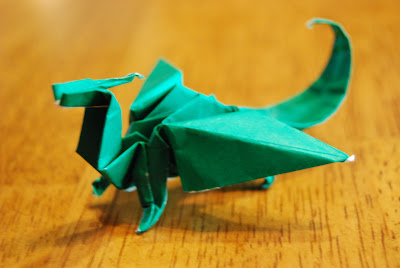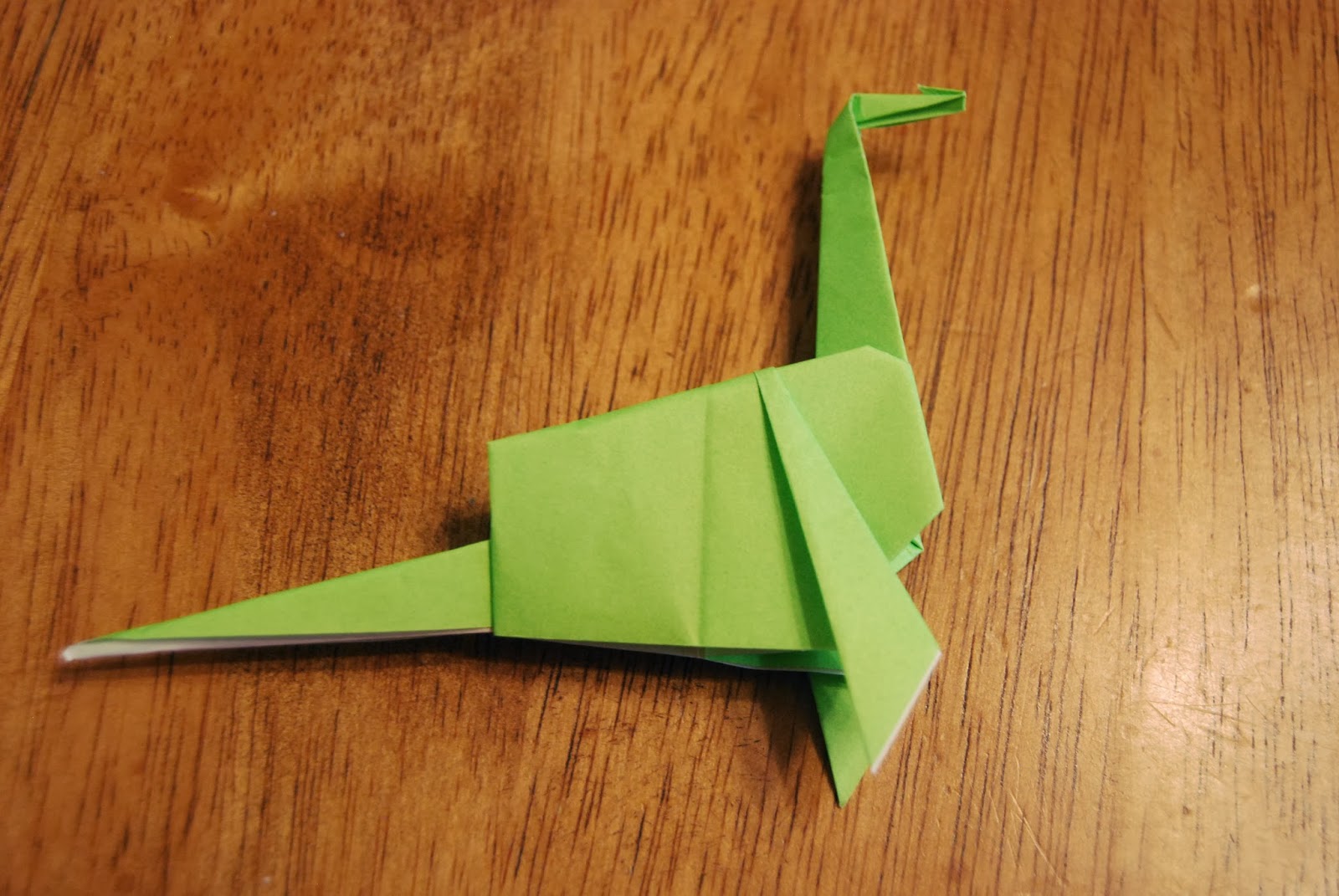Origami History
The word 'origami' is derived from two Japanese words; 'oru' and 'kami'. 'Oru' means to fold, while 'kami' means paper. That is exactly what origami is; folding paper.
It is not known exactly when origami was first practiced. It was probably shortly after the invention of paper in China in the first century A.D. It then spread to Japan around the sixth century.
At first in China and Japan paper was a rare commodity, so only rich nobles were able to practice origami. But as more paper was manufactured, more people could learn origami.
In 1797 the first origami book was published. It was entitled: How to Fold 1000 Cranes. It taught the reader how to fold origami cranes. There was a Japanese legend that if you folded 1000 origami cranes (hence the title), then you would have any one wish granted. From then on many origami books have been published; demonstrating how to fold many origami models.
In the 17th century, a German named Friedrich Froebel invented a teaching method for young kids that we now call kindergarten. Part of his curriculum was paper folding. He taught a 'one square, no cuts' philosophy of origami that is still emphasized today. The 'no cuts' part eliminated the problem of giving kindergartners scissors.
Nowadays many books, videos, and diagrams are published that help people learn origami. Many origami masters are continually designing new and more complex origami models, keeping the ancient tradition alive. Akira Yoshizowa is considered to be one of the greatest modern origamists, and he created many models that are common today.
Origami is a wonderful art that anyone, not just nobles, professors, or kindergartners can practice. That is the purpose of Epic Origami, to allow all to learn the ancient art of origami.
Sources:
ThinkQuest.org: https://www.google.com/url?sa=t&rct=j&q=&esrc=s&source=web&cd=1&cad=rja&ved=0CC4QFjAA&url=http%3A%2F%2Flibrary.thinkquest.org%2F5402%2Fhistory.html&ei=UPMfUrDQHMO1igLQtIGIAw&usg=AFQjCNEKiN2QTvODsJYLsIkGN6WCojrGSw&sig2=OU_W1dZPGC9zI2i9QkrbGQ&bvm=bv.51495398,d.cGE
Wikipedia: https://www.google.com/url?sa=t&rct=j&q=&esrc=s&source=web&cd=2&cad=rja&ved=0CDQQFjAB&url=http%3A%2F%2Fen.wikipedia.org%2Fwiki%2FHistory_of_origami&ei=UPMfUrDQHMO1igLQtIGIAw&usg=AFQjCNHKp6_qo6RghEuQ5Maa8YQEXI8zsA&sig2=eoyUv7kjKaNmW757h3ZBcw&bvm=bv.51495398,d.cGE
It is not known exactly when origami was first practiced. It was probably shortly after the invention of paper in China in the first century A.D. It then spread to Japan around the sixth century.
At first in China and Japan paper was a rare commodity, so only rich nobles were able to practice origami. But as more paper was manufactured, more people could learn origami.
In 1797 the first origami book was published. It was entitled: How to Fold 1000 Cranes. It taught the reader how to fold origami cranes. There was a Japanese legend that if you folded 1000 origami cranes (hence the title), then you would have any one wish granted. From then on many origami books have been published; demonstrating how to fold many origami models.
In the 17th century, a German named Friedrich Froebel invented a teaching method for young kids that we now call kindergarten. Part of his curriculum was paper folding. He taught a 'one square, no cuts' philosophy of origami that is still emphasized today. The 'no cuts' part eliminated the problem of giving kindergartners scissors.
Nowadays many books, videos, and diagrams are published that help people learn origami. Many origami masters are continually designing new and more complex origami models, keeping the ancient tradition alive. Akira Yoshizowa is considered to be one of the greatest modern origamists, and he created many models that are common today.
Origami is a wonderful art that anyone, not just nobles, professors, or kindergartners can practice. That is the purpose of Epic Origami, to allow all to learn the ancient art of origami.
Sources:
ThinkQuest.org: https://www.google.com/url?sa=t&rct=j&q=&esrc=s&source=web&cd=1&cad=rja&ved=0CC4QFjAA&url=http%3A%2F%2Flibrary.thinkquest.org%2F5402%2Fhistory.html&ei=UPMfUrDQHMO1igLQtIGIAw&usg=AFQjCNEKiN2QTvODsJYLsIkGN6WCojrGSw&sig2=OU_W1dZPGC9zI2i9QkrbGQ&bvm=bv.51495398,d.cGE
Wikipedia: https://www.google.com/url?sa=t&rct=j&q=&esrc=s&source=web&cd=2&cad=rja&ved=0CDQQFjAB&url=http%3A%2F%2Fen.wikipedia.org%2Fwiki%2FHistory_of_origami&ei=UPMfUrDQHMO1igLQtIGIAw&usg=AFQjCNHKp6_qo6RghEuQ5Maa8YQEXI8zsA&sig2=eoyUv7kjKaNmW757h3ZBcw&bvm=bv.51495398,d.cGE



Comments
Post a Comment